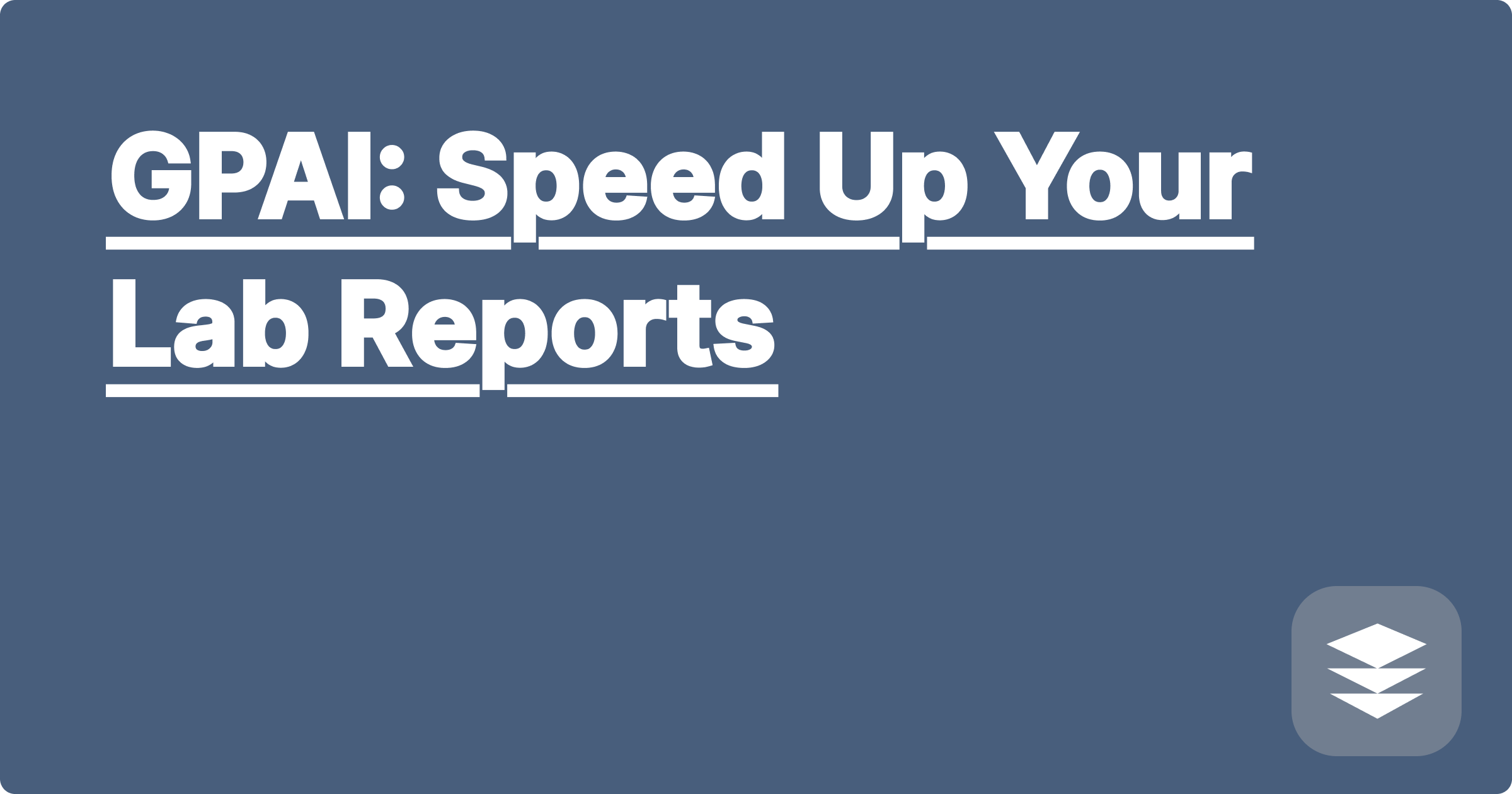
As STEM students and researchers, we’re constantly facing a deluge of information, complex concepts, and demanding deadlines. Juggling coursework, research projects, and lab reports can feel overwhelming. The pressure to excel academically while contributing meaningfully to our field can be immense. But what if there was a way to streamline our workflow, enhance our understanding, and even boost our productivity? Enter the world of Artificial Intelligence (AI), a powerful ally that can revolutionize how we approach our studies and research, especially when it comes to the often-dreaded lab reports.
This blog post explores how AI-powered tools, specifically focusing on a hypothetical platform called GPAI (Generative Pre-trained AI Assistant for Lab reports), can become your secret weapon for conquering lab report writing and accelerating your academic journey. We'll delve into the specific challenges of lab report writing, explore the capabilities of GPAI and other AI tools, and provide practical examples and actionable strategies for integrating these tools into your workflow. This isn't just about making things easier; it's about empowering you to learn more effectively, conduct more impactful research, and ultimately achieve your academic and professional goals.
Lab reports are a cornerstone of STEM education and research. They serve as a crucial bridge between theoretical knowledge and practical application, allowing us to document experiments, analyze data, and communicate our findings. However, the process of writing a comprehensive lab report can be incredibly time-consuming. From meticulously organizing raw data to crafting clear and concise explanations, each step demands significant effort and attention to detail. This process often involves multiple iterations of drafting, revising, and editing, which can quickly become a bottleneck in our overall progress. Furthermore, the pressure to adhere to strict formatting guidelines and incorporate complex scientific concepts can add another layer of complexity to the task. For many students, this can lead to late nights, increased stress, and a feeling of being constantly behind.
Imagine having an AI assistant that could help you generate initial drafts, analyze your data, and even suggest improvements to your writing. This is the promise of GPAI. This hypothetical platform, envisioned as a comprehensive AI tool specifically designed for lab report writing, can significantly streamline the entire process. GPAI could leverage natural language processing (NLP) to understand the context of your experiment, analyze your data, and generate structured sections of your lab report, including introduction, methods, results, and discussion. Furthermore, GPAI could integrate with other AI tools like Wolfram Alpha for complex calculations and data visualization, and grammar checkers like Grammarly for refining the language and style of your report. This integrated approach can free up your time and cognitive resources, allowing you to focus on the higher-level aspects of your research, such as experimental design, data interpretation, and drawing meaningful conclusions.
Using GPAI for your lab reports could be as simple as uploading your raw data and experimental details. The platform would then process this information and generate an initial draft, automatically structuring the report according to the required format. You could then refine this draft by adding specific details, clarifying explanations, and incorporating your own insights. GPAI could also offer suggestions for improving the clarity and conciseness of your writing, identifying potential areas for improvement. By integrating with other AI tools, GPAI could seamlessly generate graphs and figures, perform statistical analysis, and even check for plagiarism. This streamlined workflow could drastically reduce the time spent on tedious formatting and repetitive tasks, allowing you to focus on the intellectual core of your work.
Consider a complex physics experiment involving projectile motion. GPAI could analyze the collected data, calculate the projectile's trajectory, and generate the corresponding equations of motion. It could then incorporate these calculations and visualizations directly into the results section of your lab report. In a chemistry lab, GPAI could analyze spectroscopic data, identify the chemical compounds present, and even predict their properties. This information could be seamlessly integrated into the discussion section of your report, enriching your analysis and supporting your conclusions. For biology students, GPAI could analyze microscopic images, identify cellular structures, and generate descriptive summaries, automating a traditionally time-consuming process.
Integrating AI tools into your workflow requires a strategic approach. Start by identifying your specific needs and challenges. Are you struggling with data analysis, writing clear explanations, or simply managing your time effectively? Once you've pinpointed your pain points, you can select the AI tools that best address those needs. Experiment with different platforms and features to find what works best for you. Remember, AI tools are meant to augment your abilities, not replace them. Use them to enhance your understanding, streamline your workflow, and free up your time for more creative and strategic thinking. Critically evaluate the output of these tools and always ensure that the information generated is accurate and aligns with your own understanding. By combining the power of AI with your own critical thinking skills, you can achieve a new level of academic excellence.
In conclusion, embracing AI tools like the hypothetical GPAI can be a game-changer for STEM students and researchers. By automating tedious tasks, enhancing data analysis, and providing writing support, these tools can significantly reduce the time and effort required for lab report writing. This allows you to focus on the more intellectually stimulating aspects of your work, deepening your understanding and accelerating your progress. Don't be afraid to explore the possibilities of AI and discover how it can empower you to achieve your academic and professional goals. The future of learning is here, and it's powered by AI. Take the first step today and explore the potential of AI to transform your academic journey.